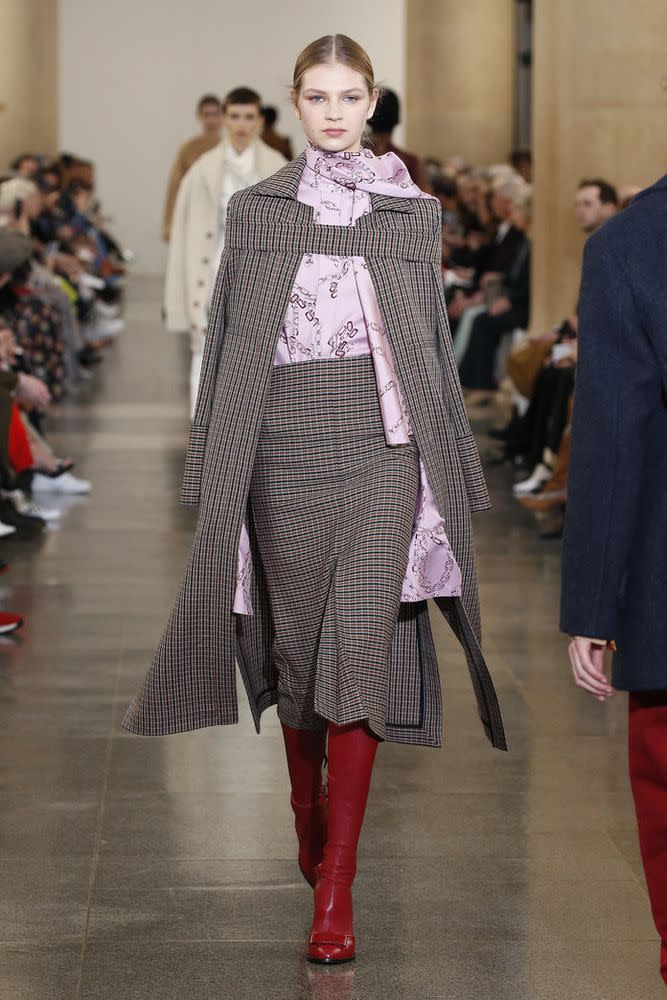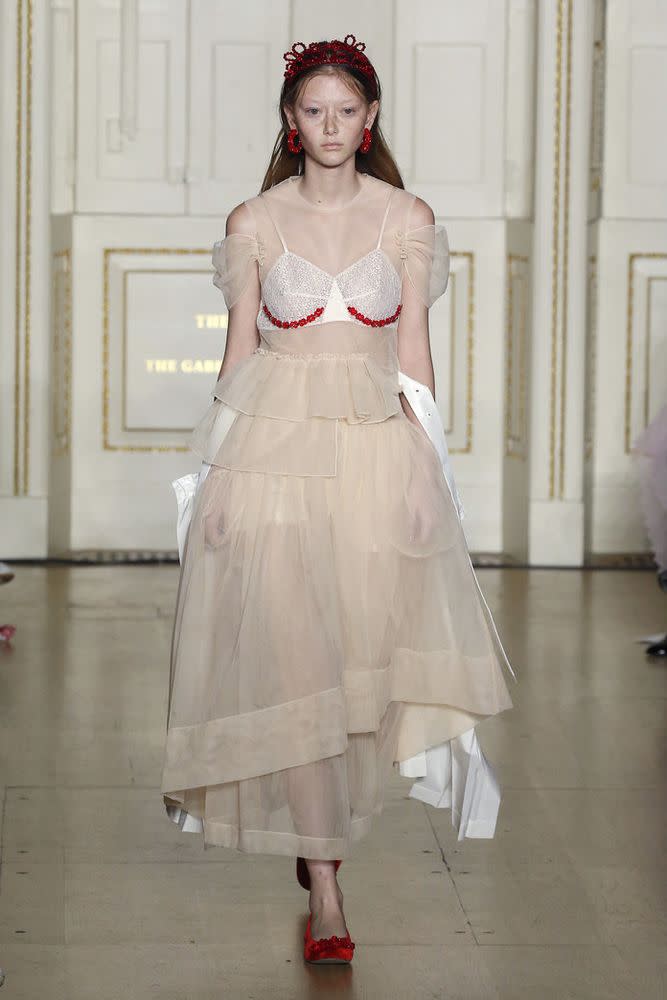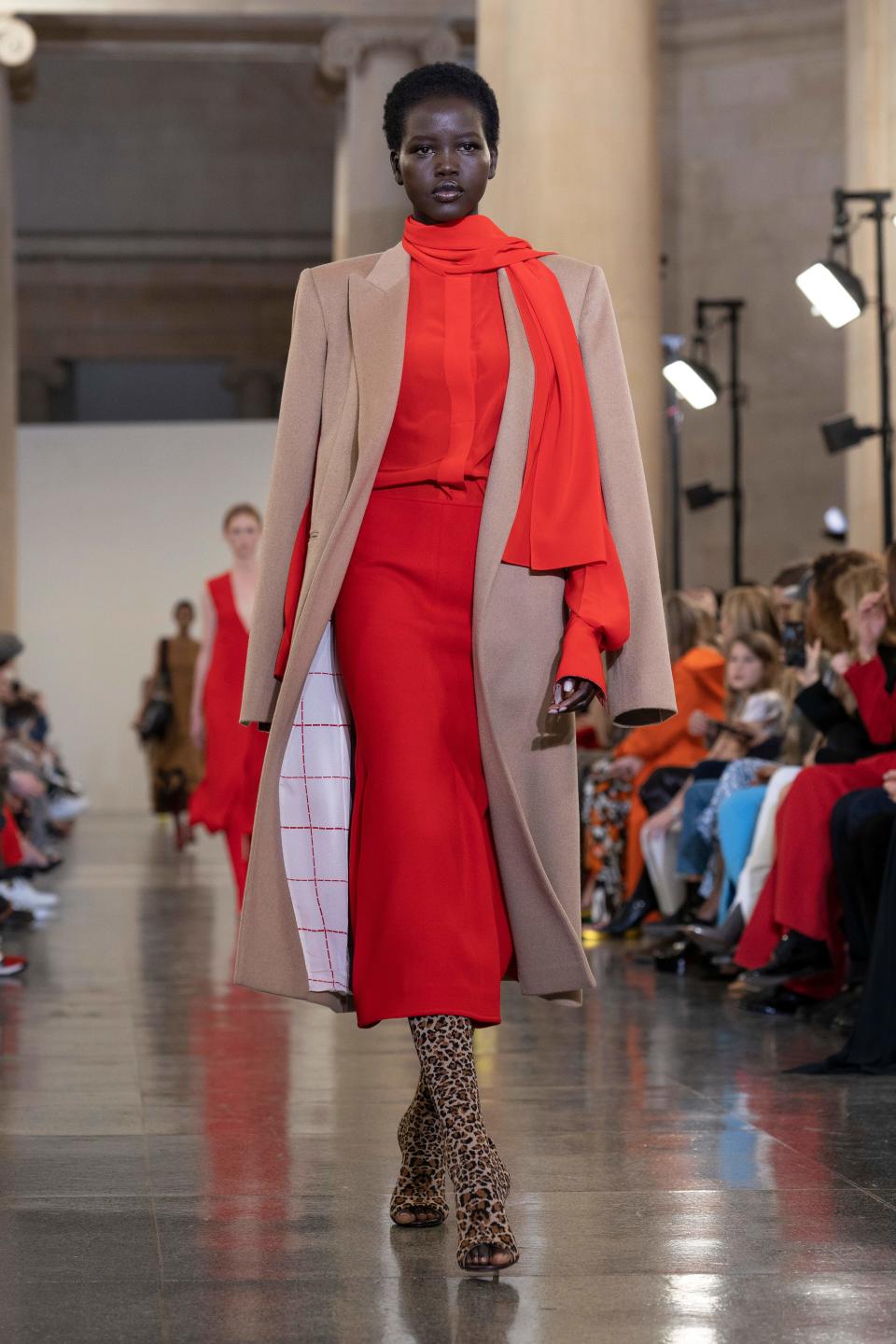The Best Collections of London Fashion Week Were All Designed By Women
Among the many attributes a revitalized London Fashion Week can boast during its current reign on the global stage is this: The three best collections shown here over the last four days were designed by women — Victoria Beckham, Simone Rocha, and Grace Wales Bonner.
These are three designers coming from very different backgrounds and at various points in their careers, each having overcome their own challenges to be heard in this industry. Beckham is, by far, the most established, but as a London designer whose brand recognition as a cultural icon here rivals that of Burberry, she has had to play along with certain stereotypes for so long that she sometimes risks appearing to be hiding behind them. Rocha, an elegant designer of eccentrically rendered, yet approachable, styles of art-house wear, has quickly stepped out of the shadows of her famous father (designer John Rocha) to become one of the city’s bright stars. And Wales Bonner, who started out in men’s wear but presented during the women’s shows this season, is the fascinating face of a new generation that is rising to challenge the inequalities that are ingrained within the industry’s longstanding and often willful ignorance of non-white culture and customers.
Wales Bonner, a graduate of Central Saint Martins still in her 20s, ascends not a moment too soon, as examples of shocking insensitivity to appearances of casual racism by elite Italian designers (products that evoke comparisons to blackface at Prada and Gucci, typically outrageous commentary about China from Dolce & Gabbana) have abounded in recent months. With the whole world now watching, the industry is not so much in need of committees that focus on diversity and inclusion, but rather a complete reset of power to clear the way for bright new voices like that of Wales Bonner. Her show was presented at the Serpentine Gallery, where Wales Bonner has also curated a nerve-touching exhibition aptly called “A Time for New Dreams,” which traces her references and ideals through the lens of black writers and artists, like the poet Ishmael Reed and writer Ben Okri. Their works also appeared and were performed in her show, with Reed’s name etched on sporting jerseys and varsity jackets. The models, with only four looks shown on women and the rest worn by reed-thin young men, walked through the gallery looking slightly swallowed whole by their baggy chinos, rugby shirts, and too-big tweed jackets, neatly echoing the style of those writers in their prime.
A post shared by Wales Bonner (@walesbonner) on Feb 17, 2019 at 4:25pm PST
It was a wonderful display of black identity and culture, but still, it should be noted, one that was put on for an audience of editors and influencers that was almost exclusively white. In a way, that rather tellingly underscored the real barriers that people of color face in this business, and how disappointing it was to later learn, from an Instagram post, that two of them, a magazine editor and a stylist, were asked to move out of the way by a group of white editors and publicists. If this can still happen in London, I dread to see what may come this week at the shows in Milan.
Meanwhile, Beckham’s penchant for self-parody is starting to border on camp, complete with an Spice Girls drag performance at her after party and the styling of her seven-year-old daughter, Harper, as an Anna Wintour doppelganger, seated next to the Vogue editor in the front row. Oh, did we meme. Beckham’s point, maybe, was to illustrate her “proper but definitely not prim” approach for fall, shown in an excellent collection of fit-and-flare dresses with an oversize chain motif. She also made a solid case for tweed capes.

Coming off a very personal spring collection that combined elements of her Irish and Chinese heritage, Rocha took inspiration from her intimates for fall, incorporating motifs from the works of Louise Bourgeois as fabrics and casting women with idiosyncratic style in her show. Chloë Sevigny wore a tiered white dress she described as “bootybloomers” on Instagram, and other looks were worn by Lily Cole, Marie Sophie Wilson (muse to Helmut Newton) and the artist Conie Vallese. Both the casting the clothes, which included corseted bras worn over loosely smock-like dresses, and sheer layered skirts, seemed more a nod to women’s empowerment, which suddenly puts London in a positive new light.

It probably helps that London’s fashion council has been led by women for the last several years, and some of its most prominent retail executives are women, like Natalie Massenet and Ruth Chapman. Now London is playing with a strong roster of female designers, including Alexa Chung, who did some of the most attractive versions of this season’s big trend — tweed, Roksanda Ilincic, Molly Goddard, and Mary Katrantzou. And yes, there’s still room for the guys, like Christopher Kane, who was into balloons this season — balloon knits, plastic handbags, bubble-shaped heels holding up his shoes, and Riccardo Tisci, whose second season for Burberry made it clear that he’s embracing the both sides of the house’s heritage, marrying the elite with the street. Less than a decade ago, the company turned up its nose up at the low-income “chavs” who had once adopted its check as their flag. Now Tisci’s showing formal suits mixed with puffer vests on models with the airs of a hooligan aesthete.
Last but not least, there’s celeb-favorite Erdem, who won the front-row this season with a very tardy appearance by Joan Collins. Arriving at his show more than 20 minutes late, wearing dark sunglasses and a sequined dress, she turned to Glenda Bailey and quipped, “I was stuck in the lift, darling.”


